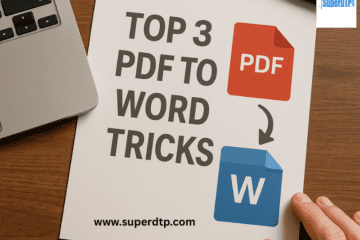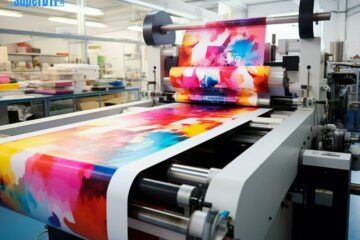Desktop publishing (DTP) software has become an essential tool for graphic designers, marketers, and individuals who wish to create professional-looking documents for print or digital distribution. Desktop publishing is important because it allows individuals and businesses to create professional-looking print or digital media materials without requiring extensive design expertise or expensive equipment. It empowers users to design and produce high-quality documents such as brochures, newsletters, flyers, and books that are visually appealing and engaging. Desktop publishing software offers a range of tools and features that enable users to format and style text, manage images and graphics, and create layouts with precise control over typography, colors, and styles. With the increasing demand for DTP software, there are now numerous options available on the market. Choosing the right DTP software can be challenging, especially for beginners. In this blog post, we’ll take a look at how to select the right DTP software for your needs.
What is desktop publishing software?
Desktop publishing software is a type of software that allows users to create documents that are intended for print or digital distribution. The software typically includes tools for designing layouts, formatting text, and inserting images and other graphics. Some of the most popular desktop publishing software options include:
Adobe InDesign: Professional desktop publishing tools like Adobe InDesign are used to make and design layouts for print or digital media. It provides a variety of tools for handling photos and graphics, formatting and styling text, and designing layouts with fine control over typography, colors, and styles. Graphic designers, publishers, and marketing specialists frequently use it for the creation of books, periodicals, brochures, flyers, and other print or digital media. Both Windows and Mac operating systems are supported by Adobe InDesign, which is a component of the Adobe Creative Cloud software package.
Microsoft Publisher: A desktop publishing program called Microsoft Publisher is used to design and produce layouts for print or digital media. It provides a selection of templates and tools for text formatting and styling, picture and graphic management, and layout creation with flexibility over typeface, color, and style. Microsoft Publisher has a user-friendly interface and is intended for users at home and in small businesses who may not have much design experience. It is only compatible with Windows operating systems and is a component of the Microsoft Office package. Creating flyers, brochures, newsletters, and other print or digital material is frequently done with Microsoft Publisher.
QuarkXPress: A professional desktop publishing tool called QuarkXPress is used to design and build layouts for print or digital media. It provides a variety of tools for handling photos and graphics, formatting and styling text, and designing layouts with fine control over typography, colors, and styles. Graphic designers, publishers, and marketing experts frequently utilize QuarkXPress to create books, magazines, brochures, flyers, and other print or digital media. It is renowned for its sophisticated typographic controls and data blending abilities. Operating systems for Mac and Windows are both compatible with QuarkXPress.
Consider Your Needs
The quality and effectiveness of the design and publishing processes are directly impacted by the choice of desktop publishing software, making it essential. Before choosing a piece of software, it’s crucial to take your needs into account because every piece of software has a different set of features and capabilities that might or might not match what you need.
Knowing your needs will help you choose the software that is best for your particular projects. For instance, you might want to think about using a program like QuarkXPress, which is renowned for its sophisticated typographic features, if you need to design a book with complicated typographic settings. But, if you are a small business owner seeking to design flyers or brochures, you might want to think about using a user-friendly program like Microsoft Publisher that is simple to use and operate.
Another factor to consider is the compatibility of the software with your operating system and other software you use. For example, if you work on a Mac, you may want to consider software like Adobe InDesign that is compatible with Mac operating systems.
Considering your needs also helps you determine the level of support and training you may require. If you are new to desktop publishing, you may want to consider software that provides extensive documentation, tutorials, and customer support.
When choosing desktop publishing software, it’s essential to consider your specific needs. What types of documents do you plan to create? Will you be designing brochures, flyers, business cards, or something else? What level of customization do you need? Will you need to create unique layouts or designs, or will you be working with templates?
Ease of Use
Another critical factor to consider is the ease of use. DTP software can be complex, and some programs may be more user-friendly. If you’re new to desktop publishing, you may want to choose software that has a more intuitive interface and requires less technical knowledge to use. Adobe InDesign, for example, is an industry-standard program that can be quite complex for beginners. On the other hand, Microsoft Publisher is known for its ease of use and is a popular choice for home and small business users.
Pricing
Software for desktop publishing can cost anywhere from nothing to hundreds of dollars. When selecting software, take your budget into account. Some software solutions provide free or inexpensive substitutes for more expensive products, although these alternatives could have restrictions or be deficient in some capabilities. For instance, a monthly subscription charge is required for the use of the premium software choice Adobe InDesign. However, Microsoft Office, which is a one-time purchase, often comes with Microsoft Publisher.
Features
Desktop publishing software can have a wide range of functions. While some programs offer simple design and layout tools, others offer more sophisticated functionality including the ability to edit images, create vector drawings, and combine data. Choose software that gives the characteristics you require after giving them some thought. QuarkXPress is well-known for its sophisticated typographic capabilities, but Adobe InDesign is well-known for its extensive feature set.
Compatibility
It’s essential to choose software that is compatible with the operating system you’re using. While many DTP software options are available for both Windows and Mac computers, some may only be available for one or the other. Additionally, consider the compatibility of your software with other programs you may be using. Adobe InDesign, for example, integrates well with other Adobe programs such as Photoshop and Illustrator.
Online Resources
Desktop publishing software can be complicated, and it’s not always easy to find answers to technical questions. Look for software that has a robust online community, support forums, and tutorials available. Adobe InDesign, for example, has a vast library of online resources, including forums, tutorials, and video courses.
Conclusion
Choosing the right desktop publishing software can be challenging, but considering your specific needs, ease of use, pricing, features, compatibility, and online resources can help make the decision easier. It’s essential to choose software that meets your needs and fits your budget. Whether you’re a beginner or a seasoned professional, there is desktop publishing software available to help you create stunning documents.


